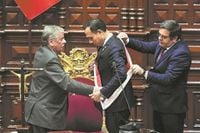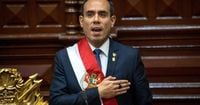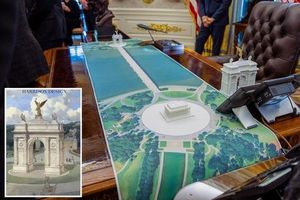Peru once again finds itself at the center of political upheaval, waking up on October 10, 2025, to its seventh president in less than a decade. The nation’s latest leader, 38-year-old José Jerí, assumed office in the early hours of Friday after Congress ousted President Dina Boluarte in a swift and dramatic overnight impeachment. For many Peruvians, this latest transition is both familiar and unsettling, highlighting the country’s persistent instability at the very top.
The impeachment proceedings unfolded rapidly on the night of October 9. Lawmakers in the 130-member unicameral Congress, having accepted four separate motions to remove Boluarte, summoned her to appear just before midnight to defend herself. When she failed to show, the stage was set for her removal. In short order, 124 lawmakers voted to impeach Boluarte—there were no votes against, according to the Associated Press. This was the ninth attempt to unseat her, but the first to succeed. The outcome was so decisive that Boluarte was declared “vacant due to permanent moral incapacity” by virtually all parliamentary groups, as reported by Havana Times.
Boluarte, a 63-year-old lawyer and Peru’s first female president, had assumed office in December 2022 after her predecessor, Pedro Castillo, was ousted following an attempt to dissolve Congress. With no vice president in place—Boluarte herself had been Castillo’s second-in-command—the presidency fell to the head of Congress. Jerí, who had only taken over as president of Congress in July 2025, suddenly found himself propelled to the nation’s highest office.
In his first remarks as interim president, Jerí pledged to seek “reconciliation,” address Peru’s spiraling crime problem, and ensure “neutrality” in the presidential elections scheduled for April 2026. “I have not thought of myself, but rather of Peruvians,” Boluarte said in a televised speech recounting her administration’s achievements, just minutes before the broadcast was cut off to show Jerí’s swearing-in. The abruptness of the transition left many Peruvians reeling—and wondering what comes next.
The context for Boluarte’s ouster was a surge in violent crime that has left the nation anxious and angry. Official figures cited by the Associated Press reveal that 6,041 people were killed in Peru between January and mid-August 2025—the highest number for that period since 2017. Extortion complaints soared by 28% compared to the same period in 2024, with 15,989 cases between January and July. Havana Times added that 1,690 murders were recorded between January and September 2025, while 180 bus drivers were killed for refusing to pay extortion fees. Just hours before the impeachment, a gunman opened fire at a concert in Lima, injuring five—including members of the popular cumbia band Agua Marina—further inflaming public outrage over insecurity.
Boluarte’s response to the crime wave included controversial remarks during a military ceremony earlier that week. “This crime has been brewing for decades and has been strengthened by illegal immigration, which past administrations haven’t defeated,” she said, as reported by the Associated Press. “Instead, they’ve opened the doors of our borders and allowed criminals to enter everywhere... without any restrictions.” Her comments, and the government’s inability to stem the violence, fueled widespread protests and eroded what little political support she had left.
Indeed, Boluarte’s presidency was marked by turmoil from the outset. After assuming office in the wake of Castillo’s removal, she faced massive demonstrations—especially in Peru’s poorest provinces—demanding her resignation and early elections. The repression of those protests left over 60 people dead and hundreds injured, according to Havana Times. More than 500 protests erupted in the first three months of her term, underscoring the deep divide between rural Peru and Lima’s political elite.
Scandals further dogged Boluarte’s administration. She was embroiled in controversies over an undeclared luxury watch, a brother accused of influence peddling, misuse of public funds for personal expenses, and a self-approved pay raise that brought her salary to 25 times the minimum wage. Earlier in 2025, she enacted a contentious amnesty law benefiting security forces accused of crimes during anti-terrorism campaigns in the late 20th century—despite objections from both UN and Inter-American human rights organizations.
The political drama did not end with her ouster. On October 10, the Attorney General’s Office asked a judge to prohibit Boluarte from leaving the country as it investigates alleged money laundering and corruption. One case involves money allegedly funneled through Boluarte before her presidency to a fugitive political leader; another concerns alleged favors for friends, including a plastic surgeon who performed a secret nose job for her in 2023—a procedure Boluarte eventually confirmed. Her lawyer, Juan Portugal, told local radio station RPP that she was at home in Lima and had no plans to seek asylum elsewhere.
José Jerí, for his part, is hardly a figure without controversy. The 38-year-old lawyer from the conservative Somos Perú party faces at least four ethics investigations, including a sexual abuse accusation that was shelved just before he became head of Congress. He has also been accused of illicit enrichment and allegedly leading a corruption network while chairing the legislature’s Budget Committee—allegations he denies, calling them political attacks by opponents. Earlier this year, the Attorney General’s Office confirmed it had opened a preliminary investigation into a rape accusation against Jerí, but the case was closed without explanation. Jerí has publicly denied all wrongdoing.
The speed and decisiveness of Boluarte’s removal—without a single vote against—once again underscored the fragility of Peru’s presidential power. The current Congress, dominated by Fujimorists and other right-wing factions, has frequently used its constitutional authority to declare the presidency vacant, removing leaders and later pursuing them for corruption with judicial backing. Since 2000, Peru has seen an almost unbroken string of presidents brought down by scandal or political chaos, with some terms lasting just days. Former President Alan García, for example, took his own life in 2019 as police arrived to arrest him in connection with the Odebrecht bribery scandal.
Despite the ongoing political turbulence, Peru’s economy has managed to show resilience. Driven by mining and strong trade ties with China, the International Monetary Fund projected a 3% GDP growth for 2025—modest, but still above the Latin American average, according to Havana Times. Yet economic growth has done little to stem the tide of violence or restore public confidence in government institutions.
As Jerí settles into his role as interim president, he faces an uphill battle: restoring order, regaining public trust, and steering Peru toward the scheduled April 2026 elections. For now, the streets remain relatively calm, with only some transport workers ending strikes that had paralyzed routes in protest of insecurity. But the underlying issues—crime, corruption, and the chasm between the capital and the countryside—remain as daunting as ever.
Peru’s latest political transition may have been swift, but the path to stability is anything but clear. The nation’s future hangs in the balance as it awaits yet another election—and hopes, perhaps in vain, for a period of calm after years of relentless upheaval.





